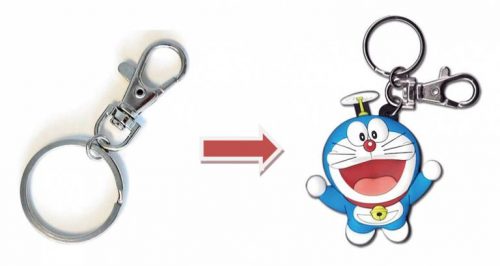Rubber keyrings are a handy accessory used for corporate gifts, personal collections, and promotional branding. However, the quality of the materials used and the production method cause differences in the quality of the finished product. Businesses looking to use them as a long-lasting promotional item and consumers searching for the best design benefit from knowing this. We will explore several smart methods for identifying rubber keyrings that are of superior and inferior quality.
Consider Material Quality
Evaluating the quality of the materials used in manufacturing is the first step in distinguishing between high-quality and low-quality rubber keyrings. Even when bent, high-quality materials maintain their shape and seem flexible. They also do not break easily.
Cheap, brittle rubber that resembles plastic is an example of a low-quality material. When flexed, it can become damaged. Additionally, with frequent use, it hardens, fades, and cracks.
Some manufacturers will offer samples, or you can start with a small order. To test the created keyrings, slightly bend them. Rubber keyrings of great quality should withstand this test just like those from Rocket Badge.
Finish and Texture of Rubber Keyrings
Two other factors that affect the quality of rubber keyrings are the texture and finish. High-quality production is indicated by keyrings with a consistent surface finish that is free of air bubbles, a smooth and even texture without sharp edges, and a durable yet soft feel to the touch.
However, keyrings that are rough, have obvious bumps and irregularities, look overly glossy, or have exposed seams from subpar moulding indicate low-quality manufacturing. Run your fingertips over the keyring’s surface to determine whether the finish and texture are high quality or low quality. A product of superior quality is indicated by a smooth and consistent texture.
Design Precision and Detailing
High-quality work is characterised by crisp and accurate lines in text and artwork, vivid colours that do not blend together, and distinct edges that are free of smudges or flaws. Low quality is demonstrated by those with printed or moulded elements that look faded or blurry, colours that seep into the surrounding areas, and deformed characters or logos.
Examine the details in well-lit conditions to gauge the quality. Details on a high-quality keyring will be distinct and free of colour smearing.
Resistance and Sturdiness of Rubber Keyrings
Two factors that are used to assess the quality of rubber keyrings are resistance and durability. Good ones do not melt or harden readily and can withstand high temperatures. Additionally, they are resilient enough to endure normal wear and tear without breaking. Crucially, they do not fade in the sun and are waterproof.
After a short time, a low-quality material splits or becomes brittle. Additionally, it discolours easily, particularly in the presence of sunlight. Finally, under strain, it is prone to tearing or snapping. Lightly stretch or twist the rubber keyring to assess its resilience and longevity. While a low-quality keyring may break or become distorted, a high-quality one will hold its shape.
Closing Thoughts
We have examined some of the elements that set high-quality rubber keyrings apart from low-quality ones. Hardware and colour quality are additional distinguishing factors to give priority to beyond those discussed above.








